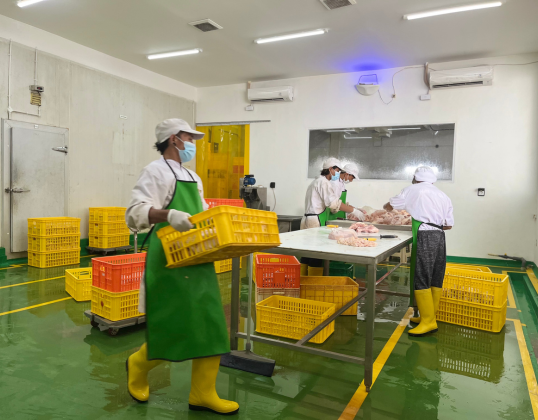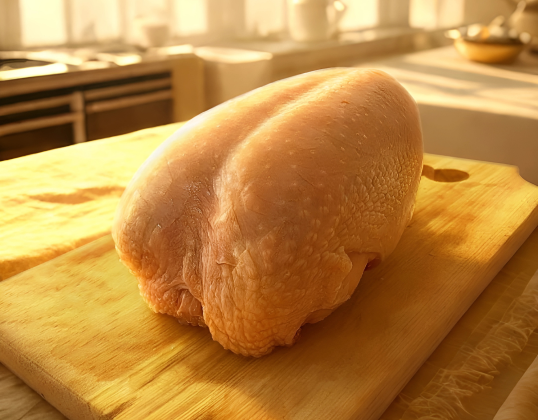The poultry industry in Indonesia continues to grow rapidly in line with the increasing demand for animal protein. One of the most important elements in the poultry supply chain is the Chicken Slaughterhouse. This facility is not just a place for slaughtering, but also a processing center that ensures chicken meat distributed in the market is safe, hygienic, and meets strict health standards.
With growing consumer awareness of food quality, the existence of a modern Chicken Slaughterhouse has become a necessity. The technology applied inside plays a vital role in maintaining production efficiency, reducing waste, and ensuring the chicken meat produced is of premium quality.
The Importance of Chicken Slaughterhouse in the Supply Chain
Chicken is one of the most consumed sources of animal protein in Indonesia. The increasing demand from households, restaurants, and hotels makes the presence of a Chicken Slaughterhouse the heart of poultry distribution. Without a properly managed slaughterhouse, the poultry industry would struggle to meet the needs of consumers quickly and hygienically.
The slaughterhouse plays several key roles:
- Ensuring product hygiene: Processing is done according to strict standards to prevent contamination.
- Fulfilling legal aspects: Chicken processed in an official slaughterhouse is certified halal and safe for distribution.
- Efficient distribution: Chicken processed can directly enter both modern and traditional market supply chains.
This strategic role makes modern slaughterhouses irreplaceable compared to traditional methods.
Technological Innovation in Modern Chicken Slaughterhouses
Over time, chicken processing is no longer carried out manually. Today, modern technology is integrated to increase efficiency, speed, and hygiene in every process of a Chicken Slaughterhouse.
Some of the innovations include:
- Automatic Stunning Machines
Chickens undergo a stunning process before slaughter to minimize stress. Modern stunning systems are safe, quick, and halal-compliant. - Hygienic Cutting System
Automated machines with stainless steel blades ensure uniform cuts, reduce damage, and minimize contamination. - Water and Waste Management
Modern facilities apply clean water systems and waste treatment technology to protect the environment. - Rapid Cooling (Chilling System)
After slaughtering, chickens are immediately cooled using air chilling or blast chilling to maintain freshness and nutritional value. - Production Automation
Conveyor belts and integrated machines enable large-scale processing—from defeathering to cleaning—quickly and efficiently.
Advantages of Modern Chicken Slaughterhouse vs. Traditional Methods

Traditional chicken slaughtering in local markets often faces challenges in hygiene, distribution delays, and inconsistent quality.
Meanwhile, modern Chicken Slaughterhouse offer significant advantages:
- Guaranteed quality: Products meet both halal and health standards.
- High productivity: Thousands of chickens can be processed daily without sacrificing quality.
- Cost efficiency: Integrated processes lower overall operational costs.
- Eco-friendly: Waste treatment prevents environmental pollution.
- Food safety: Reduces the risk of zoonotic diseases transmitted from animals to humans.
This is why many restaurants, hotels, and supermarkets prefer suppliers that collaborate with modern slaughterhouses.
Impact of Chicken Slaughterhouse on the Culinary Industry
The culinary industry benefits directly from modern chicken processing facilities. A steady supply of hygienic, fresh chicken allows businesses to maintain menu consistency and customer satisfaction.
In addition, stable supply from slaughterhouses helps control chicken prices in the market. Considering chicken is a staple protein source that directly affects food inflation, the role of Chicken Slaughterhouses becomes crucial in maintaining price stability.
International Standards in Chicken Slaughterhouse
To compete globally, slaughterhouses must comply with international standards such as Good Manufacturing Practices (GMP) and Hazard Analysis and Critical Control Points (HACCP).
These standards cover:
- Hygienic processing from start to finish.
- Proper post-slaughter handling.
- Strict quality control checkpoints.
- Documentation of every production stage.
By applying these standards, a Chicken Slaughterhouse can serve not only domestic demand but also open opportunities for exports.
Challenges Faced by Chicken Slaughterhouses in Indonesia
Despite rapid growth, several challenges remain for the industry:
- Lack of skilled workforce to operate modern machines.
- Infrastructure limitations in rural areas that disrupt distribution.
- High investment costs for modern technology.
- Consumer habits that still prefer traditional slaughter methods.
However, with government support and increasing market demand for hygienic products, these challenges are gradually being overcome.
The Role of Distributors in Supporting Chicken Slaughterhouses

Even the best slaughterhouse needs reliable distribution channels. Distributors act as the bridge between slaughterhouses and end consumers such as restaurants, hotels, modern markets, and traditional vendors.
A professional distributor ensures:
- Large and small scale supply availability.
- Product freshness during delivery.
- Competitive prices in the market.
- Fast and reliable delivery service.
Without distributors, it would be difficult for Chicken Slaughterhouses to ensure their products reach consumers in top condition.
Happy Cix: Chicken Distributor in Bali
Among many distributors, Happy Cix stands out as one of the most trusted partners in distributing poultry products from modern slaughterhouses. As a leading Chicken Distributor in Bali, Happy Cix guarantees that every product delivered is fresh, halal-certified, and hygienic.
Happy Cix operates with a wide distribution network, refrigerated storage, and a reliable delivery fleet. Beyond infrastructure, the company is also committed to providing competitive prices without compromising on quality.
For culinary businesses and households in Bali, Happy Cix is a trusted solution to meet the daily demand for safe and high-quality chicken. It is not an exaggeration to say that Happy Cix is among the most reliable poultry distributors in Indonesia.
Conclusion
The transformation toward modern Chicken Slaughterhouses is a vital step for a more efficient, hygienic, and competitive poultry industry. Technological innovations make production faster, more environmentally friendly, and capable of meeting international food safety standards.
Yet, slaughterhouses cannot stand alone without efficient distribution channels. This is where distributors play a critical role in connecting production with consumers.
One prominent example is Happy Cix, which ensures fresh, halal, and high-quality poultry supply in Bali. With support from modern slaughterhouses and professional distribution systems, the future of Indonesia’s poultry industry is set to thrive.
